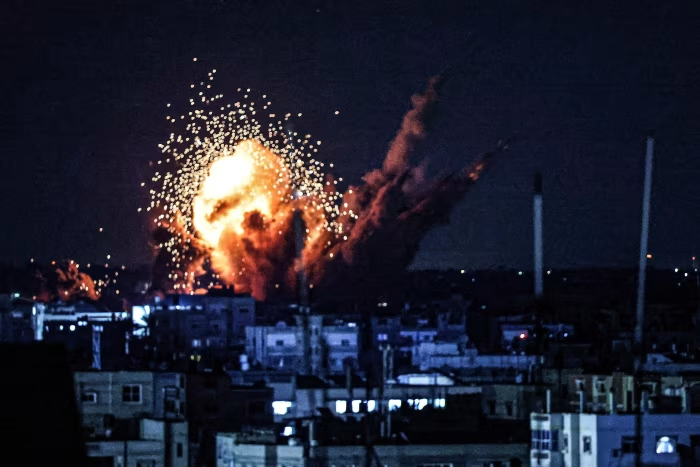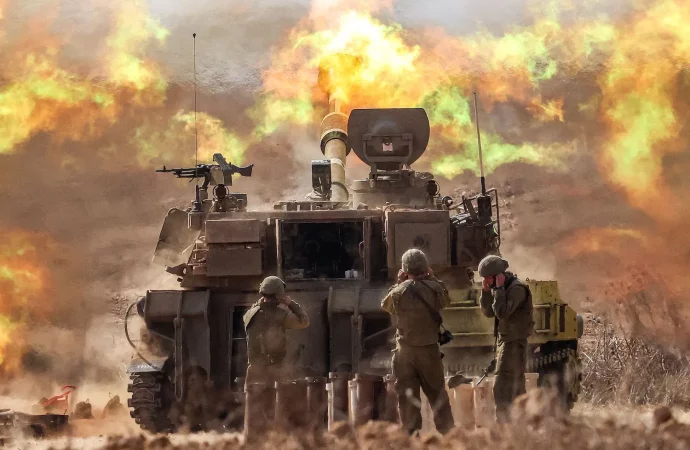Introduction The conflict between Israel and Hamas has escalated in recent times, with Iran openly expressing its support for the Palestinian militant group. As tensions rise, it is crucial to assess the potential for a prolonged war, considering Iran’s backing of Hamas. This article delves Israel-Hamas conflict into Iran’s support for Hamas and examines the
Introduction
Iran’s Support for Hamas
-
Financial and Military Assistance: Iran has been a long-standing supporter of Hamas, providing financial aid, weapons, and military training. This support strengthens Hamas’s capabilities and allows them to sustain their resistance against Israel.
-
Ideological Alignment: Iran and Hamas share a common ideological opposition to Israel. Both entities view the Israeli occupation as illegitimate and advocate for the establishment of a Palestinian state. This ideological alignment further solidifies their alliance and increases the likelihood of prolonged conflict.
-
Proxy Warfare: Iran sees Hamas as a valuable proxy in its regional power struggle with Israel. By supporting Hamas, Iran can exert influence and project power in the Israeli-Palestinian conflict, potentially destabilizing the region further.
Assessing the Potential for a Prolonged Conflict:
-
Regional Dynamics: The involvement of Iran in supporting Hamas adds a regional dimension to the conflict. It raises concerns about the potential for escalation and the involvement of other actors in the region, further complicating efforts to find a peaceful resolution.
-
Increased Military Capabilities: With Iran’s support, Hamas may acquire more advanced weaponry and military capabilities. This could prolong the conflict by enabling Hamas to launch more sophisticated attacks against Israel, potentially leading to a cycle of retaliation and counter-retaliation.
-
International Diplomatic Efforts: The involvement of Iran in supporting Hamas may complicate international diplomatic efforts to de-escalate the conflict. It could hinder the prospects of reaching a negotiated settlement and prolong the suffering of civilians on both sides.
-
Humanitarian Consequences: A prolonged conflict would have severe humanitarian consequences for the people living in the region. It would result in increased casualties, displacement, and the destruction of infrastructure, exacerbating the already dire situation for civilians.

Image by: https://www .ft.com
Conclusion
Visual Table for Key Points:
| Key Points | Details |
|---|---|
| Iran’s Stake in the Conflict | Historical involvement and current interests |
| Hamas’ Long-term Strategy | Iran’s perspective on Hamas’ objectives and tactics |
| Regional Implications | Broader Middle East impact of Iran’s support |
| Dr. Amir Hossein’s Analysis | Expertise and insights on conflict dynamics |
| Diplomatic Efforts | Potential avenues for resolution |
| Humanitarian Toll | Impact on civilians and the need for intervention |
| Long-term Scenarios | Possible outcomes and their implications |
| International Players | Influence of global actors in the conflict |
| Lessons from History | Relevance of historical conflict resolution |
| Path to Lasting Peace | Key takeaways and suggestions for peace |
Organic Keyword Usage
Integrate relevant keywords like “Israel-Hamas conflict,” “Iran’s perspective,” and “Middle East relations” organically throughout the article for improved search visibility without compromising readability.
Human-Centric Formatting
Emphasize clear language, concise explanations, and incorporate visuals to enhance reader understanding and engagement.





















Leave a Comment
Your email address will not be published. Required fields are marked with *